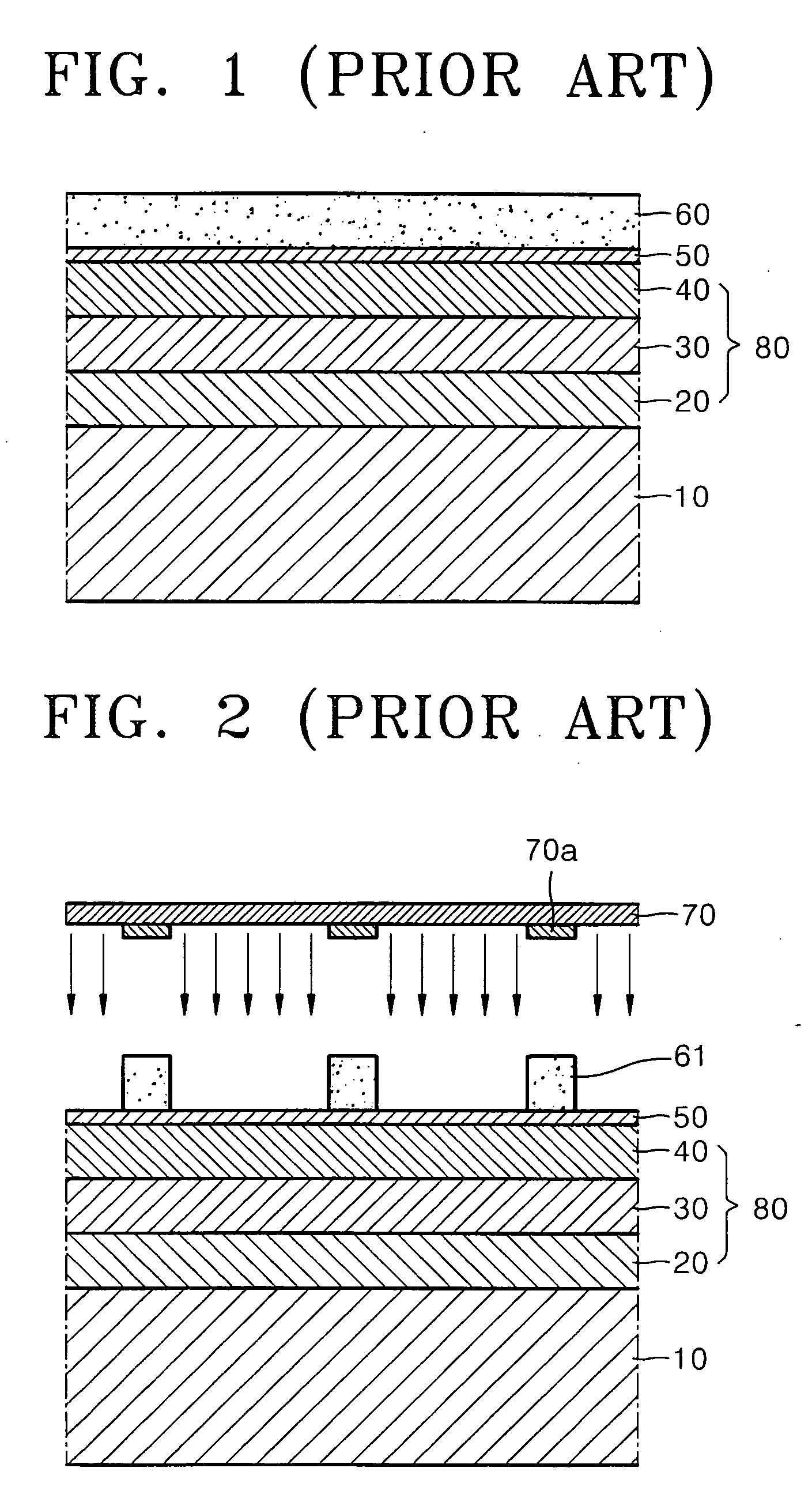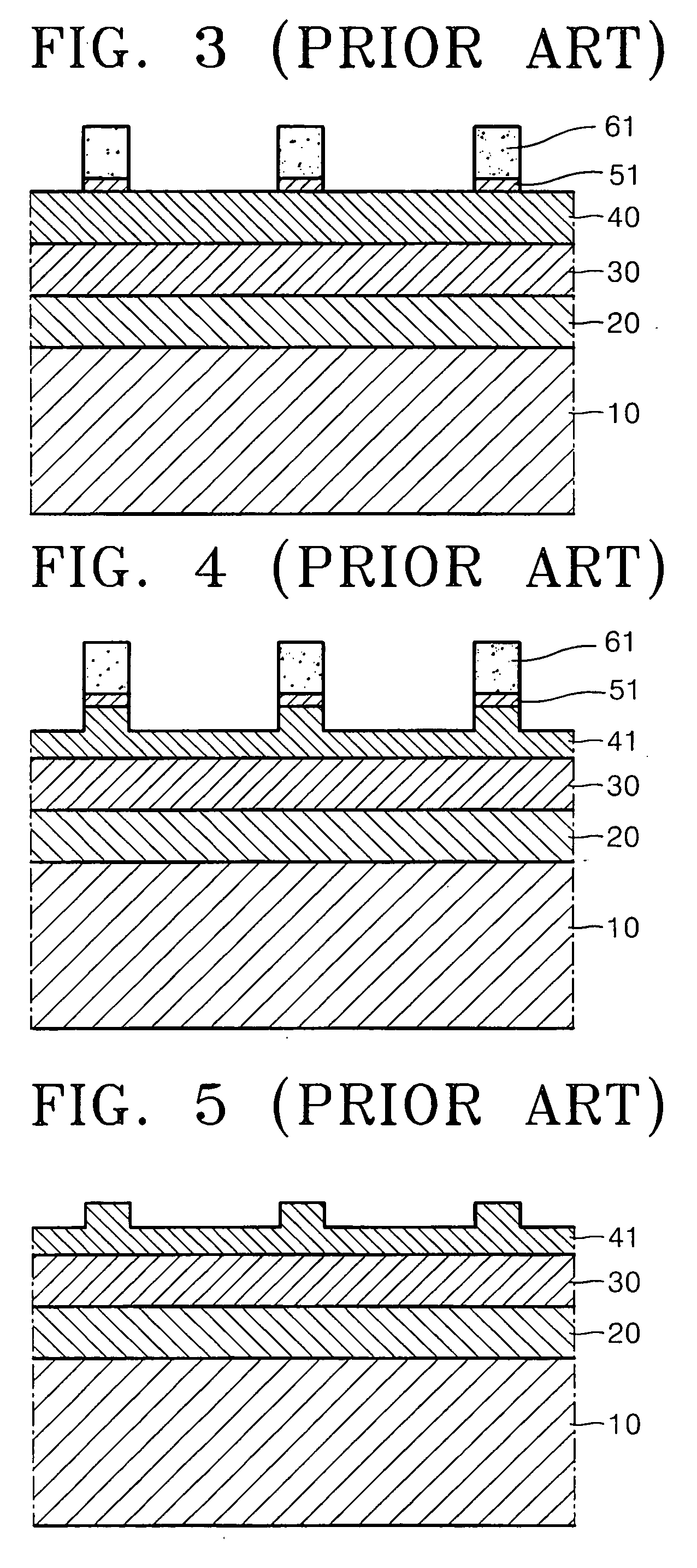Method of forming micro-patterns using multiple photolithography process
a photolithography and micro-pattern technology, applied in the field of micro-patterns, can solve the problems of inability to perform as a mask for subsequent etching processes, decreased device yield, and high cost of etching process
- Summary
- Abstract
- Description
- Claims
- Application Information
AI Technical Summary
Benefits of technology
Problems solved by technology
Method used
Image
Examples
Embodiment Construction
[0047] Hereinafter, embodiments in accordance with various aspects of the present disclosure will be described more fully with reference to the accompanying drawings, in which exemplary embodiments are shown. It will also be understood that when a layer is referred to as being “on” another layer or a substrate, it can be directly on the other layer or the substrate, or intervening layers can also be present. In any given layer or a substrate, there can be at least two surface levels formed in portions thereof, i.e., a higher level and a lower level. The higher level can be referred to as an “embossed” portion of the layer or substrate and the lower level can be referred to as an “engraved” portion of the layer or substrate. As an example, the engraved portion can be formed by etching and the embossed portions can be unetched. As used herein a “pattern” is a layer having at least one engraved portion, and can also be referred to as a “layer pattern.” In the drawings, like reference n...
PUM
 Login to View More
Login to View More Abstract
Description
Claims
Application Information
 Login to View More
Login to View More - R&D
- Intellectual Property
- Life Sciences
- Materials
- Tech Scout
- Unparalleled Data Quality
- Higher Quality Content
- 60% Fewer Hallucinations
Browse by: Latest US Patents, China's latest patents, Technical Efficacy Thesaurus, Application Domain, Technology Topic, Popular Technical Reports.
© 2025 PatSnap. All rights reserved.Legal|Privacy policy|Modern Slavery Act Transparency Statement|Sitemap|About US| Contact US: help@patsnap.com



